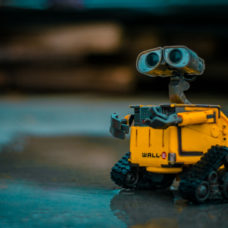Earlier in the week, at the ongoing CES event, Toyota Motor Corporation unveiled plans to build a prototype smart city from the ground up in Japan.
The automaker noted that their “city of the future,” which will be called the Woven City, would have a fully connected ecosystem powered by hydrogen fuel cells. Toyota envisions the prototype smart city as a sort of living laboratory.
Meaning, scientists and researchers will have access to a real-world environment to test and develop cutting edge technologies. These include robotics, autonomy, personal mobility, smart homes, and artificial intelligence.
In a statement to the press, Toyota President, Akio Toyoda, said:
“We welcome all those inspired to improve the way we live in the future, to take advantage of this unique research ecosystem, and join us in our quest to create an ever-better way of life and mobility for all.”
Aside from researchers and scientists, Toyota intends to populate the city with employees of Toyota Motor Corporation and their families. Possible future residents of Woven City also include retired couples, retailers, and visiting partners.
At the moment, the automaker has secured a 175-acre site at the base of Mt. Fuji in Japan to build the prototype city. Meanwhile, Danish architect, Bjarke Ingels, CEO of Bjarke Ingels Group (BIG), would be handling the city’s design.
Design of Toyota’s Prototype Smart City
Woven City’s masterplan features three designated areas, including a dedicated lane for faster vehicles, and another for a mix of lower speed and personal mobility.
There would also be a large central park as well as neighborhood parks for pedestrians. Toyota wants to build a fully sustainable city with a very minimal carbon footprint.
For the buildings, the automakers are combining robotic production methods with traditional Japanese wood joinery. Also, photo-voltaic panels on rooftops will generate solar power in addition to the energy from the hydrogen fuel cells.
Residents would have access to social support technologies, such as in-home robots to assist with their daily lives. Also, sensor-based AI in homes will monitor occupant’s health and enhance everyday lives.
According to Toyota, self-driving, zero-emission vehicles would serve as transportation and deliveries within the city. Residents can also use autonomous Toyota e-Palettes for changeable mobile retail.
“Connected, autonomous, emission-free, and shared mobility solutions are bound to unleash a world of opportunities for new forms of urban life,” says Bjarke Ingels.
Currently, the plan is for 2000 people. However, Toyota says it could add more as the project evolves.



















Comments (0)
Least Recent